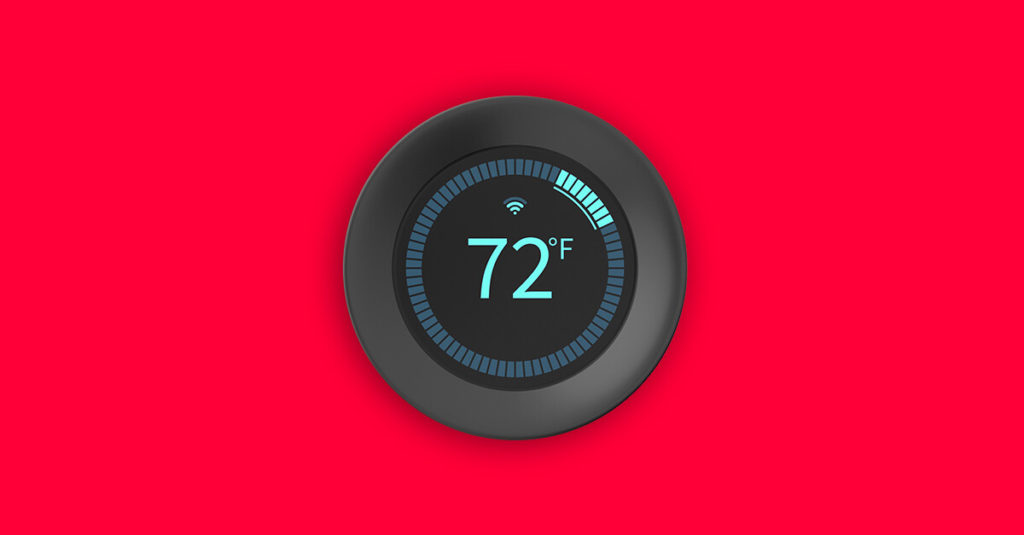
How Your Smart Home Devices Can Help You Go Green
The smart devices that automatically control your home’s temperature, lighting, sprinklers and more are also a very smart way to conserve energy and create an eco-friendly home.
The gas and electricity our homes use each day produce greenhouse gas emissions that trap heat in the environment, contributing to climate change. What’s more, many Americans habitually waste energy in their homes. Leaving lights on and using incandescent bulbs—both very common practices—account for the top two energy-wasting habits.
To help prevent this waste and reduce your carbon footprint, some smart devices can help conserve energy and lower your utility bills by allowing your household to run more efficiently. To make your home as green as possible, make sure the smart devices you buy are Energy Star products, meaning the U.S. government has approved them as being energy efficient. Also, as most smart products require Wi-Fi to communicate with you, it’s important to have a reliable internet connection, such as fiber if it’s available in your area.
Smart temperature control
According to the U.S. Energy Information Administration, heating and air conditioning accounts for more than half of the energy we use in our homes. Setting your thermostat just 3 degrees lower in the winter and 3 degrees higher in the summer can lower carbon dioxide emissions by about 1,050 pounds per year, according to the National Park Service.
Smart thermostats can automatically control the temperature even if you’re away from home. Smart devices like the Nest Learning Thermostat are able to determine your home temperature preferences and automatically create an energy-saving schedule. It produces a report showing you how much energy you use (and are saving!). Another option is the Ecobee Smart Thermostat. It has built-in voice control and works with smartphones and smart devices from Amazon, Apple and Google.
Be sure the smart thermostat you select is compatible with your heating and A/C systems.
Smart lighting
Smart lights let you adjust the lighting inside and outside your home remotely or by using a control panel. You can save energy by using their motion sensors to turn on lights only when someone is in a room. You can also avoid wasting electricity by scheduling your lights to turn on and off at certain times.
One smart home lighting system is Philips Hue. A starter kit includes four LED light bulbs, which use at least 75% less energy than incandescent light bulbs. It also comes with a bridge (a Wi-Fi hub) and an app that allows you to control the lighting from anywhere.
Another option is to use a smart plug to control certain lights. For example, each Wemo WiFi Smart Plug controls one lamp. It uses Wi-Fi that lets you adjust and schedule the light from your smartphone or tablet.
Smart sprinkler systems
Along with energy, smart products can help you save a lot of water. How much? A well-managed landscape irrigation system can save a household nearly 7,600 gallons of water—the equivalent of taking 480 showers—every year, according to the EPA.
Smart irrigation systems like the Rachio 3 Smart Sprinkler Controller automatically determine exactly how much water each area of your yard needs to thrive and can adjust for changes in the local weather. You can schedule smart irrigation systems to water your lawn at the best times to increase water conservation, such as just before dawn or after sunset.
If you don’t have a sprinkler system, you can still save water with a device like the Orbit B-hyve Hose Faucet Timer. It attaches to your hose faucet and comes with an app that lets you control it from anywhere. A smart faucet can adjust for changes in the weather forecast, so your lawn won’t be watered during a rainstorm.
Smart major appliances
Smart appliances can make your life a whole lot easier while helping to save gas and electricity. You can turn most smart appliances on or off remotely (except refrigerators, of course!) by using an app. You can also schedule them to run when energy demands and costs are lower.
- Smart refrigerators, like the ones in Samsung’s Family Hub line, save electricity by automatically adjusting the temperature. If someone leaves the fridge door open, you’ll get an alert on your smartphone. Some smart refrigerators can also scan what’s inside them and automatically order food.
- Smart ovens, such as the countertop Breville Smart Oven with Element IQ, have energy-saving features like heating elements on the top, bottom and sides, which help foods cook more quickly and evenly. These ovens are available in a variety of sizes and styles.
- There are smart options for doing your laundry, too, like smart washing machines and dryers from Samsung. These machines use an AI Powered Smart Dial to learn your favorite laundry cycles.
As you’re working to make your own home’s energy use more efficient, pay attention to many of the policy groups and coalitions that are committed to improving the globalization of energy efficiency. Continue to use smart products. You’ll not only be saving time and money, you’ll reduce your impact on the environment, too.
Product features may have changed and are subject to change.


Join the conversation